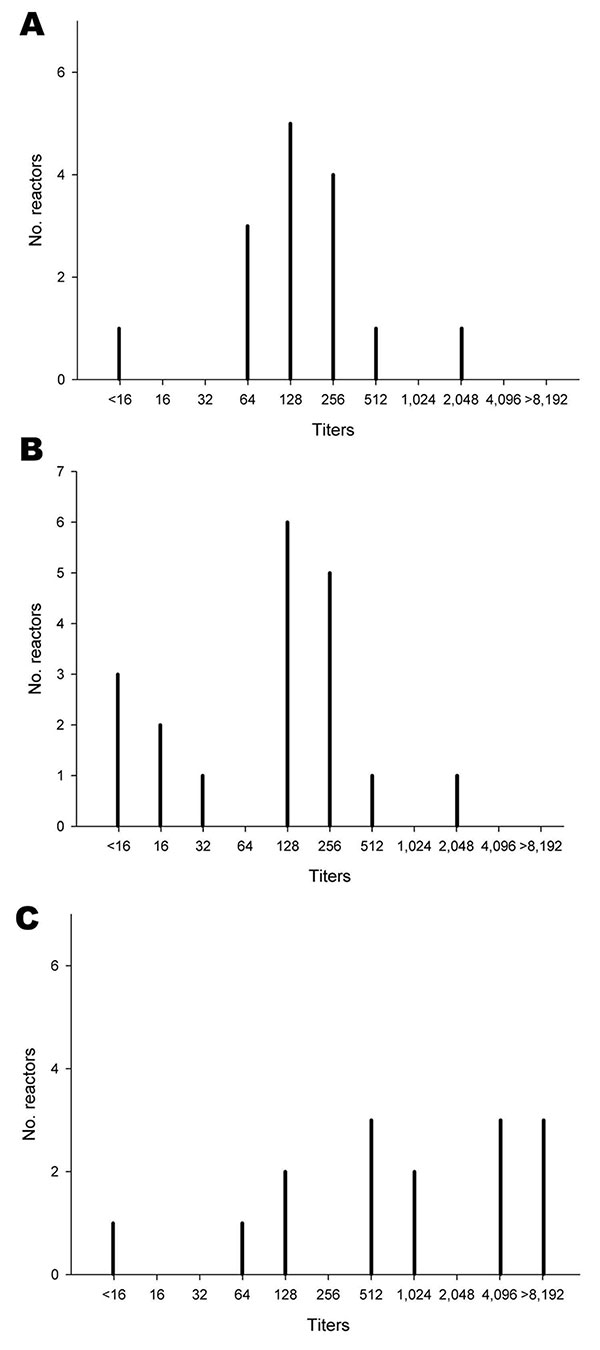Volume 15, Number 9—September 2009
Dispatch
Highly Pathogenic Avian Influenza Virus A (H7N3) in Domestic Poultry, Saskatchewan, Canada, 2007
Figure 1

Figure 1. Avian influenza virus H7-specific antibody titers of serum samples from 55-week-old breeder chickens (A), 24-week-old roosters (B), and 32-week-old breeder chickens (C), Saskatchewan, Canada, September 26, 2007. Titers of individual birds were determined by the ability of 2-fold serial serum dilutions to inhibit agglutination 0.5% (vol/vol) chicken erythrocyte suspensions by 4 hemagglutination inhibition units of avian influenza virus (H7N3) A/chicken/British Columbia/2004.
Page created: December 07, 2010
Page updated: December 07, 2010
Page reviewed: December 07, 2010
The conclusions, findings, and opinions expressed by authors contributing to this journal do not necessarily reflect the official position of the U.S. Department of Health and Human Services, the Public Health Service, the Centers for Disease Control and Prevention, or the authors' affiliated institutions. Use of trade names is for identification only and does not imply endorsement by any of the groups named above.